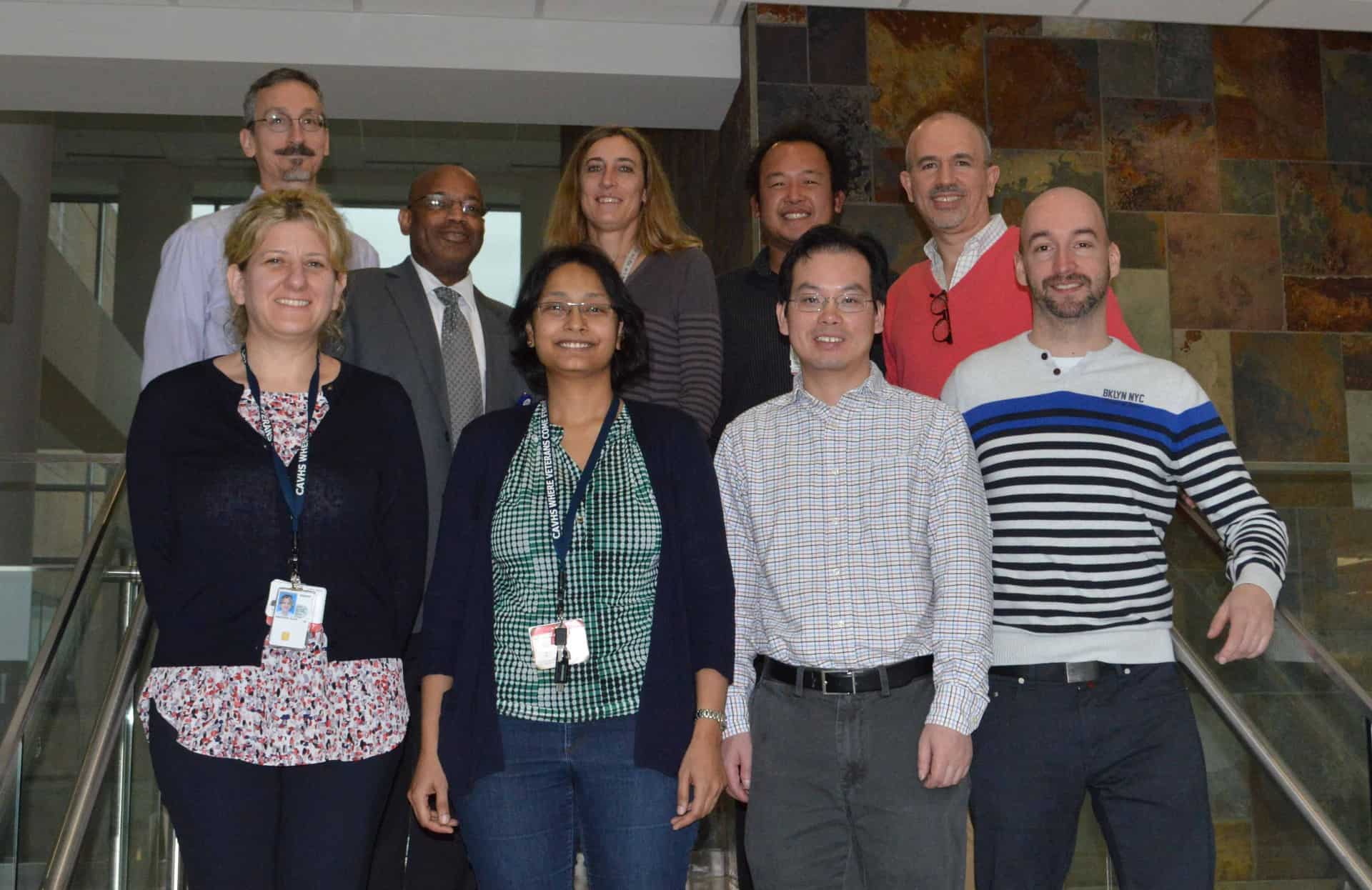NIH Awards $11.3 Million to Establish Bone Research Center at UAMS
| March 15, 2018 | University of Arkansas for Medical Sciences (UAMS) Professor Charles O’Brien, Ph.D., has been awarded $11.3 million in federal funds over 5 years to launch the Center For Musculoskeletal Disease Research.
The Centers of Biomedical Research Excellence (COBRE) grant comes from the National Institute of General Medical Sciences branch of the National Institutes of Health (NIH). The program aims to create multidisciplinary, collaborative and synergistic research centers in states with lower rates of federal research funding.
“What this funding will allow us to do is bring together a diverse group of investigators who can work as a team that is more than the sum of the parts,” said O’Brien, a professor in the Department of Internal Medicine–Endocrinology in the College of Medicine. “The COBRE approach is a proven model. Its participants are more likely to obtain independent federal funding, and it serves as a springboard for innovative, quality research.”
The $11.3 million represents Phase 1 of the COBRE grant in direct and indirect costs. It will support the research of four UAMS faculty who are early in their careers and have yet to secure independent research funding. With approval, COBRE grants can be renewed for up to three phases – representing up to $30 million in funding and support for numerous junior investigators.
Each COBRE center is organized around a theme, in this case, musculoskeletal disease. Although the participants in Phase I of O’Brien’s COBRE come from different disciplines, they are all interested in bone health.
Elena Ambrogini, M.D., Ph.D., of the Department of Internal Medicine-Endocrinology, is studying the association between atherosclerosis and osteoporosis and a therapy that could target both diseases; Jinhu Xiong, M.D., Ph.D., of the Department of Orthopaedic Surgery, is studying the mechanics behind how exercise improves bone health; Niels Weinhold, Ph.D., of the Myeloma Institute, is studying why some forms of myeloma (cancer that develops in the bone marrow) are more aggressive than others; and Srividhya Iyer, Ph.D., of the Department of Orthopaedic Surgery, is studying how different cellular stress pathways are important for issues like low bone mass.
Support for the investigators comes in many forms. They receive funding for their research. They are supported by existing technology at UAMS and the grant can fund additional technology purchases, if needed.
“Dedicated research funding is indispensable to support projects for young investigators and their path to independence,” said Associate Professor Maria Almeida, Ph.D., associate director of the Center for Musculoskeletal Disease Research. “The investigators also receive structured support in other aspects needed to develop their careers, such as budget and personnel management and professional development.”
They are exposed to mentoring and networking opportunities in several ways: from senior UAMS faculty, from each other during periodic workgroup sessions, and from distinguished outside speakers invited to UAMS on a regular basis.
They also receive detailed help applying for their own research funding. Once they secure a certain level of funding – an NIH Research Project Grant (R01) or similar level – they are considered “graduated” from the COBRE and their spot is opened to make room for another junior researcher.
“The NIH believes in this approach and so do we,” said Lawrence E. Cornett, Ph.D., vice chancellor for research. “With each graduate, the cycle continues, and over time it helps an institution develop a critical mass of investigators focused on a theme and supported by the necessary technology to do cutting-edge research.”
Ambrogini, one of the junior faculty benefitting from the grant, said she could not have dreamed of a better scenario.
“This is the perfect setup for me,” Ambrogini said. “Not only do I have the funding, I have the mentoring and expertise of seasoned investigators, and I have this environment – the resources, technology and collaborators with the technical skillsets needed to make my research possible. It’s the ideal combination of factors to help me reach the next stage in my career.”
O’Brien said that existing synergy and collegiality at UAMS built the strong foundation that made the success of the Center for Musculoskeletal Disease Research COBRE application possible. Aiding in the success of his application, he cited:
- Support for research at UAMS, specifically among leadership of the College of Medicine.
- Existing COBRE’s at UAMS.
- The Center for Osteoporosis and Metabolic Bone Diseases at UAMS, led by Stavros Manolagas, M.D., Ph.D. It is one of the largest and longest-funded osteoporosis research centers in the world and is based in the Endocrinology Division.
“Dr. Manolagas led a Program Project grant for 20 years, which really allowed us to develop true synergy within the Endocrinology Division. We’ve seen the success that consistent funding can bring, so we want to build on that success and take the lessons we’ve learned in the division and share them with others,” O’Brien said.
COBRE grants are only available for Institutional Development Award (IDeA) states where NIH funding has been historically low. They include 23 states and Puerto Rico.
In addition to O’Brien’s grant, UAMS faculty lead five other COBRE centers at UAMS and the Arkansas Children’s Research Institute:
- The Center for Translational Neuroscience; Edgar Garcia-Rill, Ph.D.; $22.5 million; third and final phase
- The Center for Microbial Pathogenesis and Host Inflammatory Responses; Mark Smeltzer, Ph.D.; $21 million; Phase II
- The Center for Studies of Host Response to Cancer Therapy; Martin Hauer-Jensen, M.D., Ph.D.; $10.5 million; Phase I
- The Center for Childhood Obesity Prevention; Judith Weber, Ph.D., $9.4 million; Phase I
- The Center for Translational Pediatric Research; Alan Tackett, Ph.D.; $11.5 million; Phase I.
###
